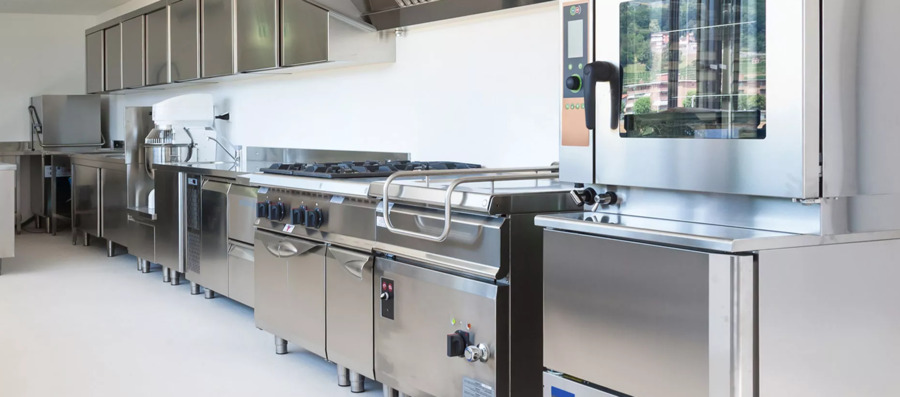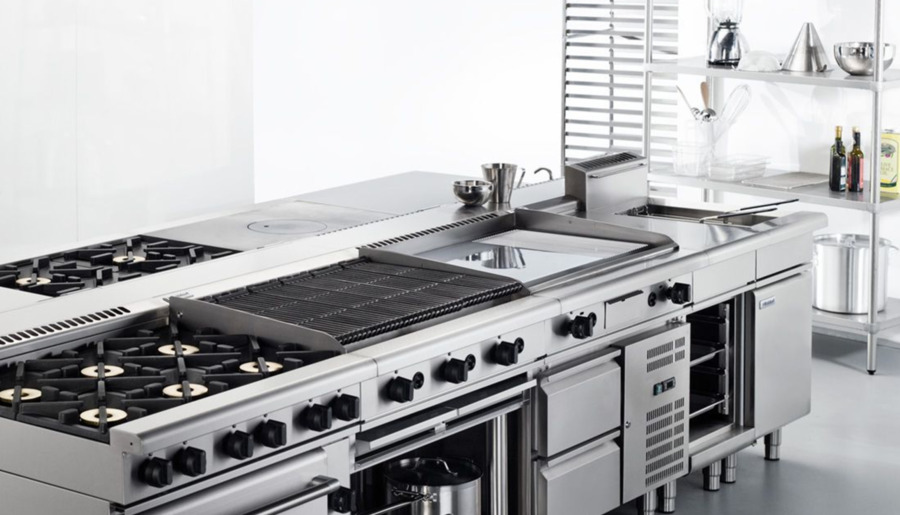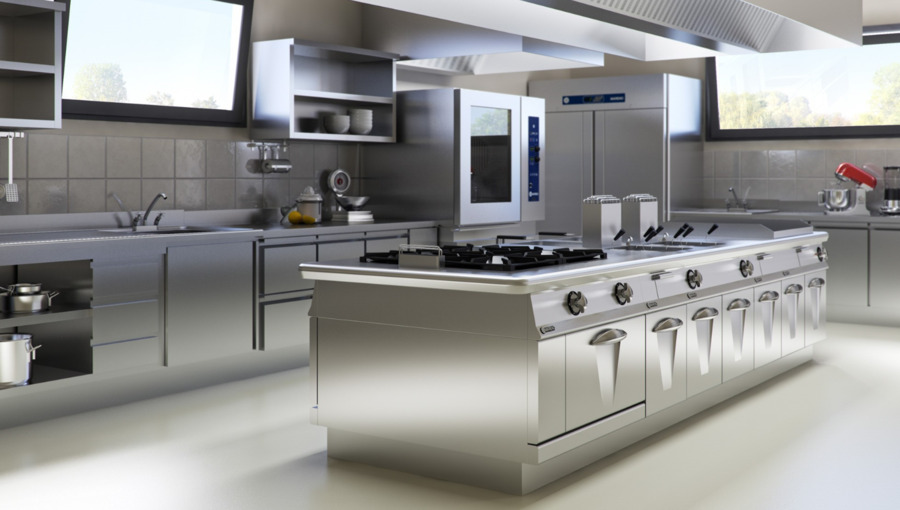Investing in high-quality kitchen equipment represents a pivotal strategic decision that can significantly influence a restaurant’s operational efficiency, food quality, and overarching success. This comprehensive guide delves into the multifaceted benefits of selecting premium kitchen equipment, meticulously balancing the initial costs against the potential for long-term value and savings. It underscores how superior kitchen tools enhance the culinary experience and contribute to the establishment’s operational smoothness, sustainability, and financial health.
The decision to invest in high-end kitchen equipment is more than a mere financial commitment; it’s a testament to the restaurant’s dedication to excellence and quality. Premium equipment can transform the kitchen’s functionality, elevate the gastronomic output, and create an environment where culinary artistry thrives. This guide will explore such an investment’s tangible and intangible advantages, including improved efficiency, consistent food quality, reduced maintenance costs, and a positive impact on the restaurant’s reputation.
By providing an in-depth analysis of how top-tier kitchen equipment is the backbone of a successful culinary operation, this guide offers restaurant owners and managers the insights needed to make informed decisions. The goal is to illuminate the path to achieving a harmonious blend of quality, efficiency, and financial prudence, ensuring the long-term success and sustainability of the restaurant business.
Page Content
Cost vs. Long-Term Savings
The dilemma of upfront cost versus long-term savings is critical when investing in high-quality kitchen equipment. While the initial price tag of such items can be steep, the long-term financial benefits often outweigh the initial investment. For example, a commercial-grade refrigerator with a higher upfront cost exceeding $2,000 can lead to substantial savings over time due to its energy-efficient design. This efficiency translates into lower energy bills, cumulatively representing significant cost savings for the restaurant.
Beyond energy savings, high-quality kitchen equipment’s durability and reliability also contribute to long-term financial savings. Premium appliances are engineered to withstand the rigors of a busy kitchen, reducing the likelihood of malfunctions and breakdowns. This robustness means fewer repair costs and less downtime, ensuring the kitchen operates smoothly without interruptions. The cost of frequent repairs and maintenance for lower-quality equipment can quickly accumulate, often surpassing the initial savings from a lower purchase price.

Durability and Reliability
Durability and reliability are paramount in a commercial kitchen, where equipment is continuously used. High-quality kitchen products are specifically engineered to meet these demands, featuring robust construction and resilient components designed to withstand the intense environment. These products are crafted from superior materials, often incorporating advanced technologies and design principles that enhance longevity and performance.
The construction of quality kitchen equipment typically involves heavy-duty metals, such as stainless steel, renowned for its strength, resistance to corrosion, and ease of cleaning. This material choice is crucial for ensuring the equipment can endure the high temperatures, frequent cleaning, and constant wear and tear typical in a busy kitchen. Additionally, the internal components of these machines, such as motors, hinges, and heating elements, are usually of a higher grade than those found in less expensive alternatives. These components are built to operate efficiently under strenuous conditions, reducing the likelihood of malfunctions.
For instance, consider a commercial oven priced between $5,000 and $15,000 for heavy and continuous use. The investment reflects the oven’s capacity to maintain consistent temperatures, provide uniform cooking, and operate continuously without faltering. This reliability is crucial for a commercial kitchen where downtime can lead to significant operational disruptions and financial losses. The oven’s durability ensures it can serve the restaurant reliably for many years, making it a financially sound decision when considering the reduced need for repairs or replacement.
Moreover, the reliability of high-quality kitchen equipment contributes to a stable and predictable operational environment. Chefs and kitchen staff can rely on these tools to perform as needed during service peaks, enhancing the overall efficiency of the kitchen. This reliability can translate into better food quality and faster service, positively impacting customer satisfaction and the restaurant’s reputation.
Enhanced Performance and Food Quality
Enhanced performance and food quality are pivotal benefits of investing in superior kitchen equipment, which improves efficiency, precision, and the overall dining experience. High-end kitchen appliances, like premium blenders priced between $400 and $600, stand out for their price and ability to deliver superior results. These appliances offer faster processing speeds, more consistent and fine textures, and greater durability compared to less expensive alternatives.
Superior kitchen equipment is designed with advanced technology that ensures faster cooking times and more consistent temperature control, which are crucial for high-quality food preparation. For example, professional-grade ovens with precise temperature settings allow chefs to cook food evenly, enhancing the flavor and texture of the dishes. Similarly, high-quality blenders can operate at higher speeds without overheating, producing smoother purées, sauces, and emulsions, thus elevating the standard of the dishes served.
This enhanced performance contributes to culinary excellence and boosts the kitchen’s operational efficiency. Restaurants can serve dishes quicker, reduce customer waiting times, and increase table turnover, directly impacting the establishment’s profitability. Moreover, the consistency provided by high-quality equipment ensures that each dish meets the same high standards every time, building the restaurant’s reputation for quality and reliability.

Safety and Compliance
Investing in high-quality kitchen equipment enhances safety and ensures health and industry regulations. Premium appliances often have advanced safety features, such as automatic shut-off mechanisms, fail-safe controls, and oil filtration systems, particularly in equipment like deep fryers. These features reduce the risk of accidents and injuries and ensure that the equipment adheres to stringent safety standards, thereby minimizing the likelihood of regulatory violations.
For instance, high-quality deep fryers, which may cost $1,000 to $5,000, are designed with built-in safety measures to prevent overheating and oil fires, protecting the kitchen staff and the establishment. These fryers often include oil filtration systems that extend the life of the cooking oil and ensure consistent product quality while reducing the fire hazard associated with degraded oil.
Technological Advancements and Energy Savings
Technological advancements in commercial kitchen equipment enhance operational efficiency and contribute significantly to energy savings and environmental sustainability. High-quality kitchen appliances often incorporate the latest technological innovations, such as programmable features, digital interfaces, and smart kitchen management systems, which allow for precise control and monitoring of cooking processes. These advancements can lead to more consistent results, reduced waste, and optimized resource use.
For instance, modern energy-efficient dishwashers, which can cost around $7,000, embody these technological advancements. They are designed to use less water and energy without compromising cleaning performance. Such dishwashers often come with features like multi-stage filtration systems, energy-saving wash cycles, and heat recovery systems, contributing to significant water and electricity consumption reductions. Over time, the savings on utility bills from using these energy-efficient appliances can offset the initial investment.
Additionally, integrating smart technology in kitchen equipment allows for remote monitoring and control, leading to better resource management and preventive maintenance, further reducing operating costs. Smart appliances can also track usage patterns and suggest optimizations, leading to additional savings and improved operational efficiency.
Sustainability and Eco-Friendly Practices
Premium kitchen equipment can enhance a restaurant’s brand reputation, leading to higher customer satisfaction and repeat business. For example, high-end espresso machines priced at $2,000 to $5,000 can improve the quality of coffee served, attracting coffee enthusiasts and boosting the establishment’s reputation. High-quality, energy-efficient equipment reduces a kitchen’s carbon footprint and aligns with eco-friendly business practices. Investing in appliances that are Energy Star-rated not only cuts down on utility costs but also supports sustainability efforts. For instance, a restaurant upgrading to energy-efficient refrigerators and ovens may report a 30% reduction in energy costs, improving its bottom line and green credentials.

Budgeting and Financing for Quality Equipment
Investing in quality kitchen equipment requires careful budgeting and financial planning. Financing options, leasing versus buying, and calculating the return on investment (ROI) are crucial considerations. Leasing high-end equipment can be a viable option for businesses looking to minimize upfront costs while still benefiting from the latest technology.
In conclusion, the decision to invest in high-quality kitchen equipment is a balance between initial expense and long-term value. The benefits of durability, enhanced performance, safety compliance, and sustainability contribute to a restaurant’s success, making it a wise investment for those aiming for long-term operational efficiency and customer satisfaction.
